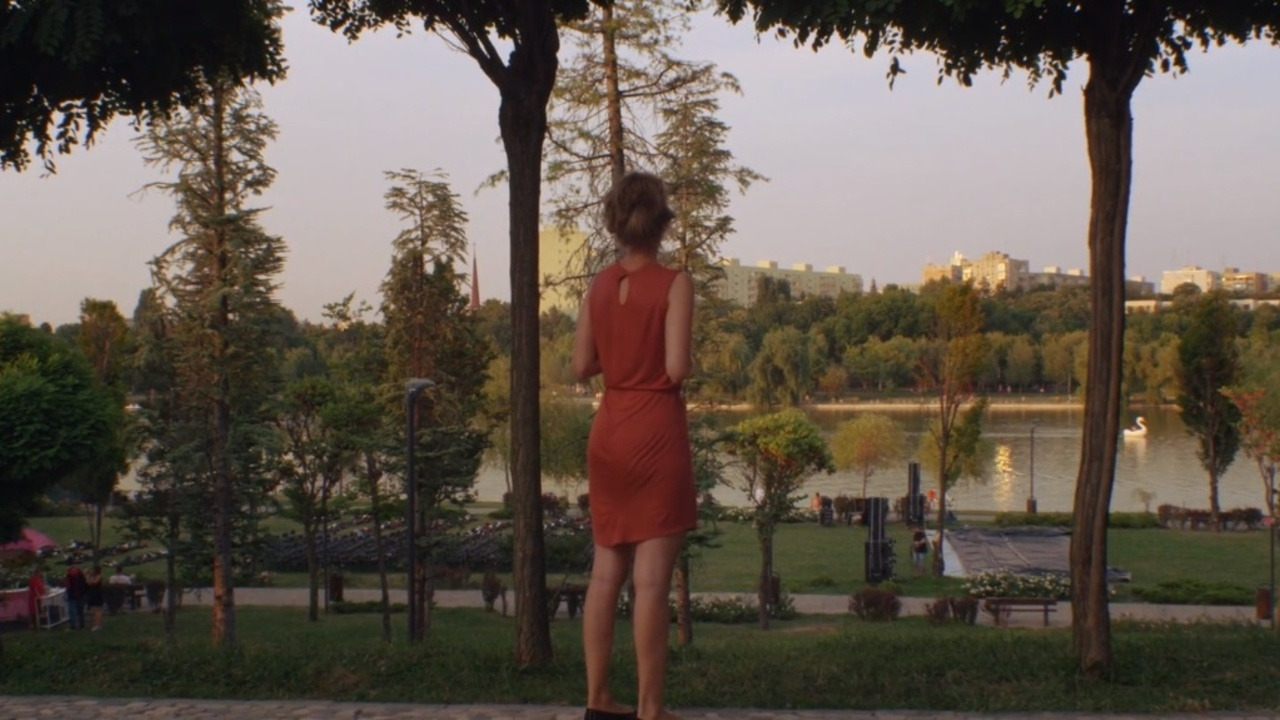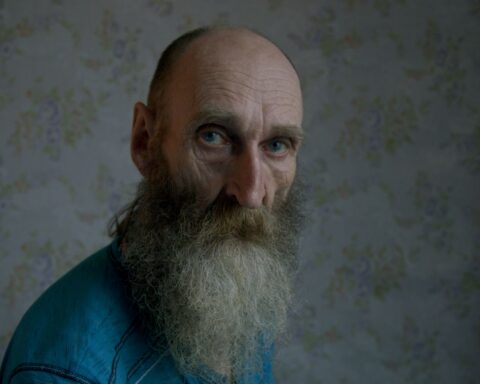They Sleep Standing
(Canada, 71 min.)
Dir. Bogdan Stoica
A hybrid documentary fiction, They Sleep Standing unfolds throughout a heavenly Romanian summer. Three 30-something adults consider their futures during a season that often seems beyond time or space, imagining and questioning the possibilities that may await them. The atmosphere, brimming with colour and life, occasionally invaded by the soft glow of CGI fireflies, invites reflection, casting an almost fantastic light on all proceedings.
In its most magical moments, They Sleep Standing channels the majesty of early Lumières shorts. The subjects are relatively passive and live life without great incident. Their environments often take centre stage as we observe wind blowing through trees and dogs wandering through spaces searching for love and affection. The space suggests a certain grace offered by the natural world, and the peripheries hint at its ephemeral quality; not only will summer soon come to an end, but climate change threatens the possibility of any future at all.
The film’s open structure allows for random encounters and incidents that may not be immediately relevant to the subjects’ lives but expand the world and possibilities. During one sequence, the film breaks away to shed light on an older man who has toiled his life away in a vineyard. Surrounded by abundance, he tells the story of his masters eating all the food leaving him only bones. The world has changed substantively in just a couple of generations; the millennials in the film are less likely than ever to befall this wounded fate, so why then are they so sad?
One of many documentaries from this year tackling questions of the future, They Sleep Standing takes a two-prong approach, utilizing intergeneration experiences and examining millennial stagnancy. Aside from our principal players, the older generation offers a compelling foil. Parents and other boomer-aged characters seem more at ease with the state of their lives and world compared to their children. They also seem more occupied; whether cooking and gardening, they are in movement. The younger, more principal characters often seem quite literally still, anchored to tables and couches, their bodies spinning in place much like their minds.
Unlike other future-looking documentaries from this year like Futura, which features interviews with mostly adolescent characters imagining a time distant from today, this movie considers whether everything is already gone and past. In their 30s, the subjects are less interested in grand questions about the world’s fate as their time is occupied with mundane considerations related to jobs and relationships. Weighed down by the disappointment of failed promises, they seem incapable of imagining anything beyond their initial expectations. The dissatisfaction that has all but set in has bloomed into resentment that blinds the subjects to the beauty surrounding them.
Amidst the more conversational moments of the film, grand operatic moments seem to have little impact on the subjects’ ability to change. A virtue in They Sleep Standing is its beauty: shot during the golden hour with the swell of the natural world matched with loud, guttural music that seems to invoke ancient, primal experiences. The sequences are stunning and offer brief moments of reprieve but do little to quell the millennial anxieties central to the film. Why can’t the subjects embrace the beauty that surrounds them? Why do they remain unchanged?
Like most great “Millennial” art, They Sleep Standing dwells on uncertainties. While objectively wealthier and more fortunate than most of our forbearers, there is a deep-seated dissatisfaction that refuses to dissipate even as that generation comes of age and reaches towards mid-life. Access to the world beyond personal experience seems increasingly tricky as if the entirety of our experiences has turned irreparably inward. Rather than look down or condescend to its subjects, the film seems to utilize form to suggest the beauty and grace freely available to its subjects. If they open up their hearts and look beyond their anxieties, they, too, can find comfort in the world that surrounds them.











